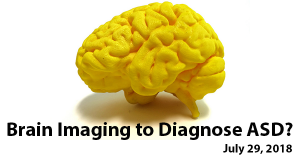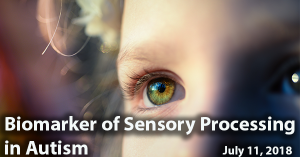Archives
July, 2018
Select a different month in the archive
Brain Study Reveals Commonality between ASD and ADHD
By Chelsea Toledo, M.A. on July 29, 2018

Background: Autism Spectrum Disorder (ASD) is a neurodevelopmental condition characterized by differences in communication, behavior, and social development. Prior brain-imaging studies have shown pattered differences in the connectivity of brains of people with ASD compared to their typically developing peers. However, little research has compared the brains of ASD with those of people with other neurodevelopmental disorders.
What’s New: A new study compared the connectivity of brains of people with ASD to those of people with attention deficit/hyperactivity disorder (ADHD), seeking commonalities. The researchers leveraged existing brain-imaging data from a total of 1305 people between the ages of 7 and 21 – 284 with ASD, 369 with ADHD, and 652 age-matched controls with typical development.
The researchers found:
- Three main factors were common to the brains of people with ASD and ADHD, but not people with typical development.
- The three factors were differences in the connectivity of the default mode network (a set of brain regions active when a person is daydreaming), the dorsal attention network (a set of brain regions active when a person is looking into space), and the salience network (a set of brain regions active in identifying important stimuli).
- These patterns likely comprise a “neural signature” for people with ASD and those with ADHD, reinforcing existing diagnoses made for either disorder.
Why it’s important: This study reveals underlying patterns in brain connectivity in both people with ASD and those with ADHD. Further research could help define this “neural signature” for clinical application.
Image Credit: Nevit Dilmen, NIH 3D Print Exchange, National Institutes of Health. Shared via Flickr under a Creative Commons license.
Help me understand :
| Source(s) : |
| Tweet |
Pupil Dilation in Infants linked to Autism Risk
By Chelsea Toledo, M.A. on July 11, 2018

Background: Pupillometry is the study of how our eyes react to light. When it gets dark, our pupils expand; when exposed to light, they contract. Aberrations in the size of our pupils and the speed at which they react to light may reveal underlying neurological conditions. However, pupillometry has not been extensively studied in people with Autism Spectrum Disorder (ASD).
What’s New: A new study investigated whether a relationship existed between pupils’ responses to light and autism risk in very young children. The researchers classified 208 infants between the ages of 9 and 10 months as either high risk (having an older sibling with ASD) or low risk (having no older sibling with ASD). They recorded sensory responses using cutting-edge eye-tracking technology while shining a light 16 times towards the infants’ eyes. They followed up at 36 months of age, classifying the children into ASD and non-ASD groups based on their scores on standard screening and diagnostic tools.
The researchers found:
- Children who were ultimately classified into the ASD group experienced greater constriction of the pupils in response to light as infants. This finding was especially pronounced in high-risk infants who developed ASD later on.
- Constriction of the infants’ pupils was also a predictor for ASD symptom severity. Those who experienced the greatest constriction tended to have the most severe symptoms.
- Children who were classified as high risk but not diagnosed with ASD experienced different clinical outcomes than their low-risk peers, including cognitive and motor delays, attention deficits, and hyperactivity.
Why it’s important: This study highlights an autism marker – in both individuals and in families – based on sensory processing and related to the responsiveness of pupils to light in infancy. This finding could shed light on the underlying neurological basis for ASD and may eventually inform treatment approaches.
Help me understand :
| Source(s) : |
| Tweet |

